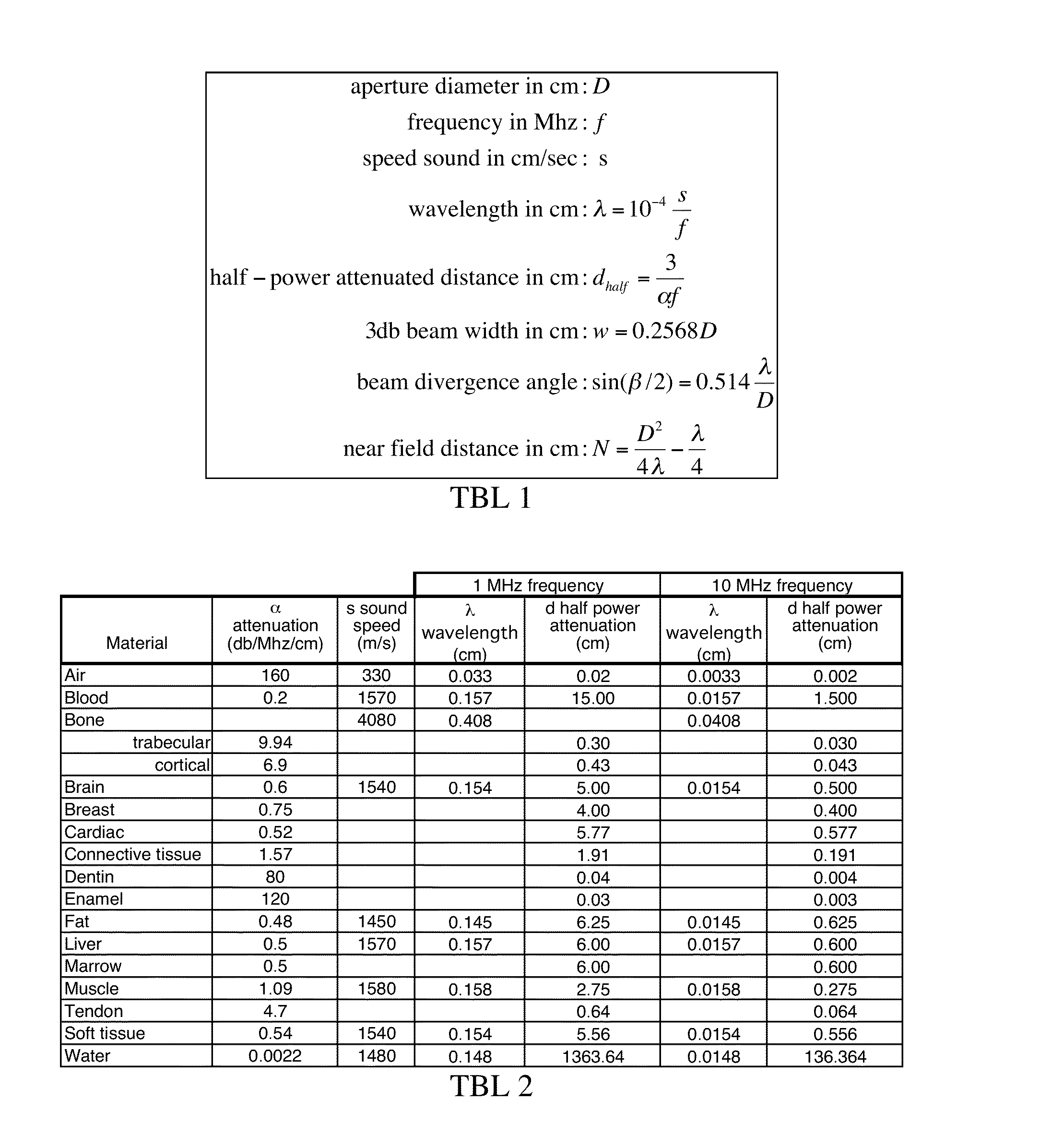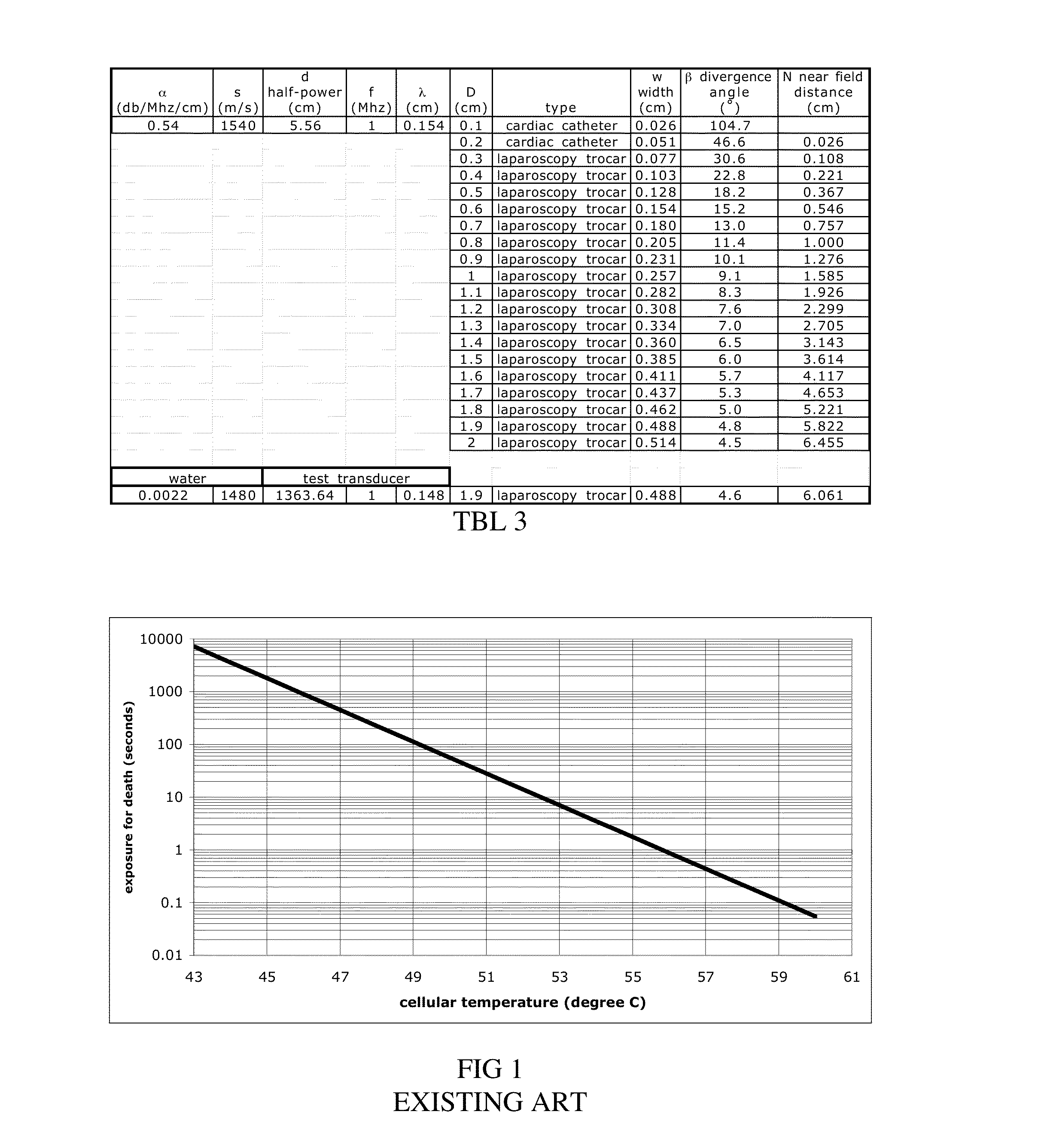Multi-beam Ultrasound Device
a multi-beam, ultrasound technology, applied in the field of multi-beam ultrasound devices, can solve the problems of cellular death and temperature ris
- Summary
- Abstract
- Description
- Claims
- Application Information
AI Technical Summary
Benefits of technology
Problems solved by technology
Method used
Image
Examples
embodiment 170
[0065]A block diagram of an analog embodiment 170 of the phase estimator 156 is presented in FIG. 14a. Typically therapeutic ultrasound frequencies are in the 0.5-8 MHz range, and the two FIG. 14a multipliers and LPFs are implemented in hardware where the multiplier must handle signals at least twice that frequency (see the 2ω terms in the psin and pcos equations above). At least a 50 MHz multiplier is preferable, and devices such as the Analog Devices AD835 is a 250 MHz dc-coupled four-quadrant multiplier suitable for this application. The LPF is preferably a simple op-amp or R-C circuit with break frequency set at a few KHz to capture the dc components of the multiplier outputs, and an analog-digital converter takes the LPF outputs into a computer, or other calculating electronic device, for division and arc-tangent operations for phase calculation. The low frequency division and inverse tangent operations can be implemented with a device such as the Analog Devices AD538 400 KHz i...
embodiment 180
and an analog embodiment 180 of the estimate phase shifter 160 is illustrated in FIG. 14b where the multiplier stages use an analog multiplier component such as the Analog Devices AD835.
[0074]In addition to forming the phase shifted slave precursor drive signal 112, the estimate shifter 160 performs the FIG. 12 algorithm and controls switches 152 and 154, and the phase estimator 156 using hardware and software facilities.
[0075]Phase Match and Shifter 108 Implemented Using Power Maximum Seeking:
[0076]As shown in
[0077]Eq. 5, the optimum φslave is the value that maximizes power. As shown in FIG. 14 and FIG. 15, a power maximum seeking embodiment 190 of the phase estimator and shifter 108 uses a dither approach to adjust φslave to maximize the power of the sensor 72 buffered ultrasound signal 98 without switches and without interrupting therapy with switch action. The dither approach, familiar to those skilled in the art, is similar to a gradient maximization scheme where the slave phas...
embodiment 210
[0082]FIG. 17 presents an embodiment 210 of the phase sweeping drive generator 202 using two ultrasound oscillators 100. Based on Eq. 3, the first ultrasound oscillator 100, operating at frequency 102ω, generates sin ωt that is the precursor reference drive signal 110, and the second ultrasound oscillator, operating at a slightly different frequency 102ω+φslave, generates the sin(ωt+φslavet) phase swept slave precursor drive 112. If φslave is a constant, a linearly swept phase is generated, and φslave can be varied for other affects. The accuracy of this embodiment is limited by the frequency accuracy of the two ultrasound oscillators.
[0083]FIG. 18 illustrates the preferred embodiment 220 of the phase sweeping drive generator 202 using a single ultrasound oscillator 100 to generate the reference precursor drive signal 110 and a phase sweeping phase shifter 222 to generate the slave precursor drive signal 112. As illustrated in FIG. 19, and based on the identity
sin([ωt+φslave(t)]=sin...
PUM
 Login to View More
Login to View More Abstract
Description
Claims
Application Information
 Login to View More
Login to View More - R&D
- Intellectual Property
- Life Sciences
- Materials
- Tech Scout
- Unparalleled Data Quality
- Higher Quality Content
- 60% Fewer Hallucinations
Browse by: Latest US Patents, China's latest patents, Technical Efficacy Thesaurus, Application Domain, Technology Topic, Popular Technical Reports.
© 2025 PatSnap. All rights reserved.Legal|Privacy policy|Modern Slavery Act Transparency Statement|Sitemap|About US| Contact US: help@patsnap.com



